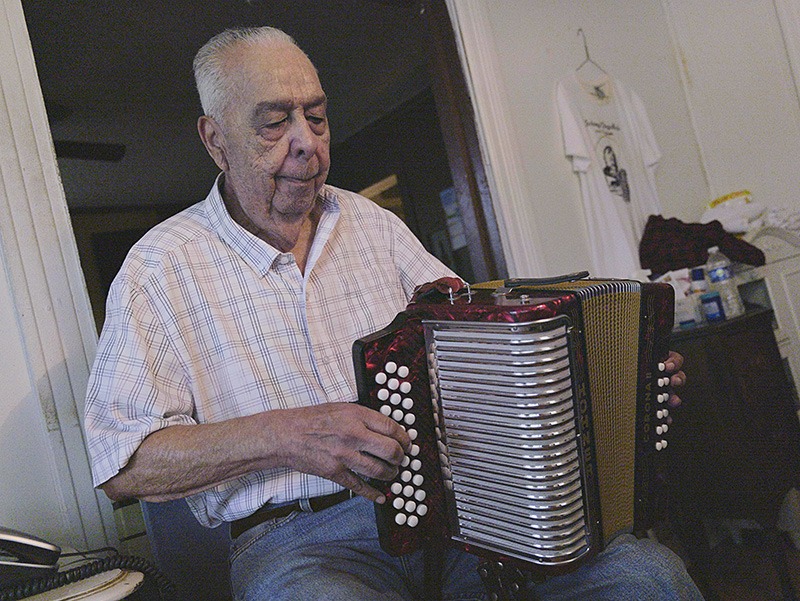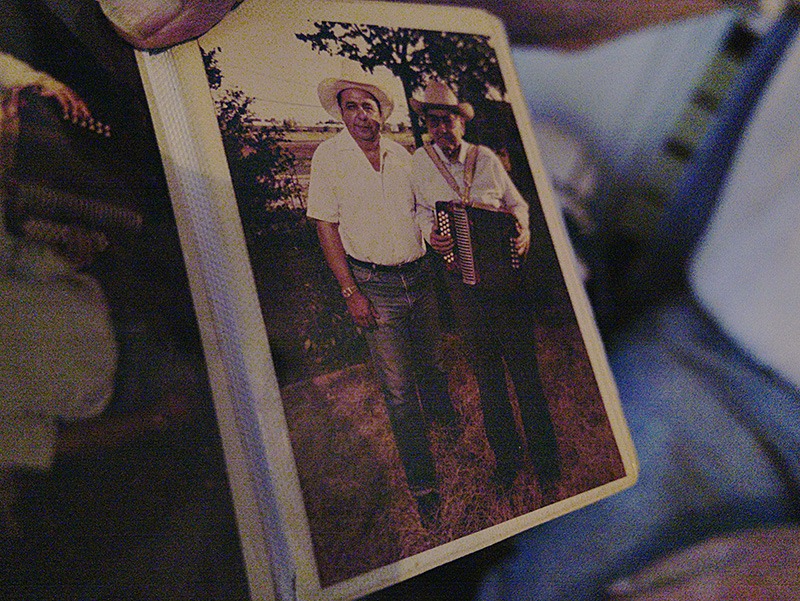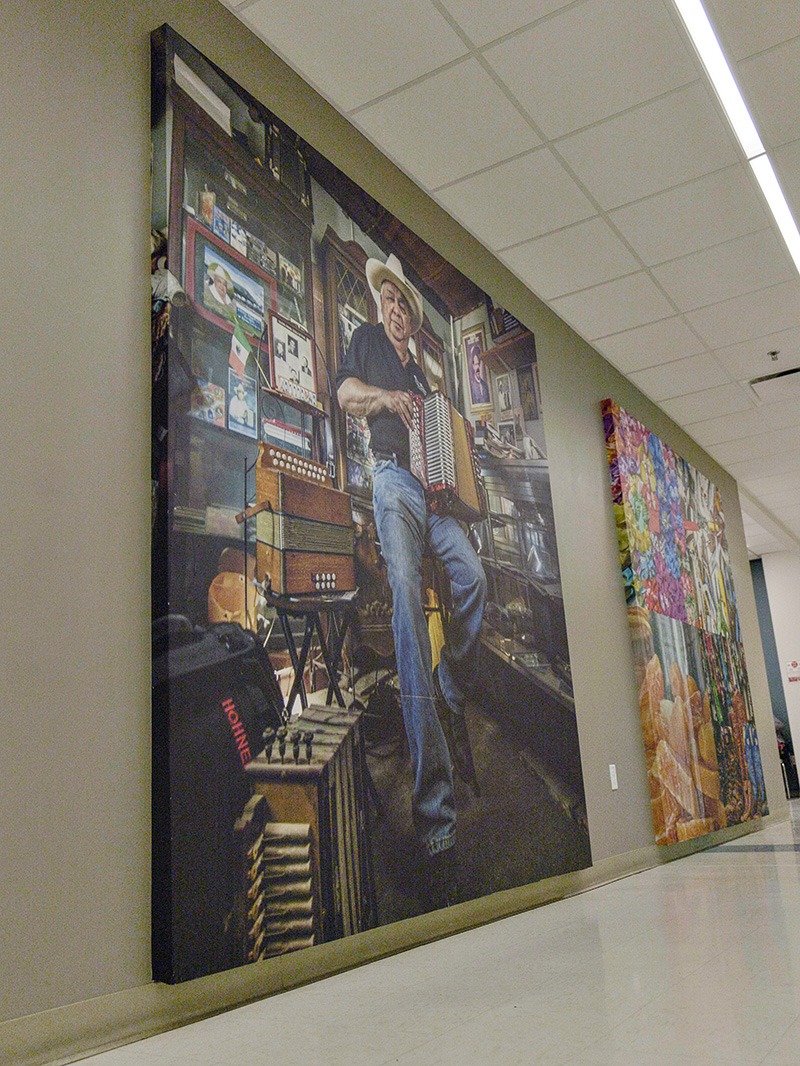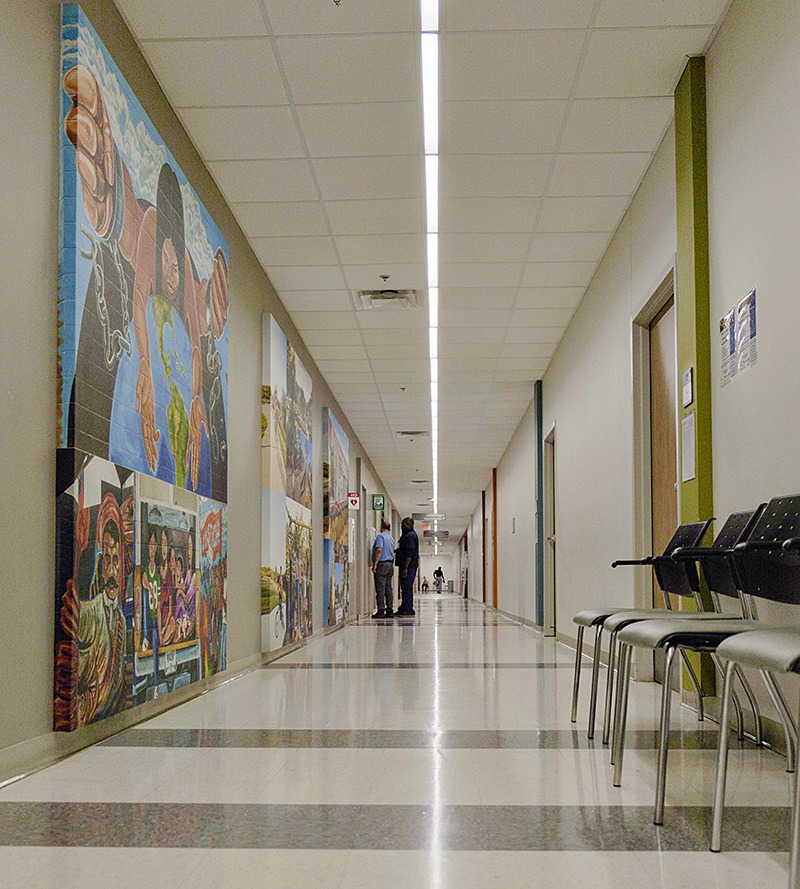How A Mural of ‘El Montopolis Kid’ In the Southeast Health & Wellness Center Reflects the East Austin Community
May 5, 2025
The 90-year-old Johnny Degollado, a legendary conjunto musician in Central Texas, still plays his accordion
AUSTIN, Texas— Johnny Degollado picked up his maroon accordion from the floor of his closet and returned to his seat. Pressing his fingers onto the keys, he tapped his feet and began ‘Repetida,’ a short song he once effortlessly played over his career.
Degollado hadn’t lost his touch, even at 90 years old.
“All those years, I enjoyed playing for the people,” he said. “They loved me the way I played the accordion.”
Today, Degollado remains a legendary figure in Austin’s musical history, a figurehead nicknamed ‘El Montopolis Kid’ who popularized Tejano conjunto music in Central Texas and connected communities through song. His career began in the 1950s and lasted for over five decades.
A pavilion is named after his namesake just off Lady Bird Lake, while a music event in April spends time every year honoring his career.

“On Cinco de Mayo, it’s Johnny’s Day,” said Piper LeMoine, the Communications Director for the Rancho Alegre Music Festival.
But Degollado’s biggest influence may be in East Austin, where he’s lived in the same home off Montopolis Drive since 1954. When the Southeast Health & Wellness Center opened in 2016, Central Health honored Degollado’s legacy with a large mural of him on its walls.
Then 81, he even performed during the facility’s grand opening.
“If you had been around the neighborhood for a certain length of time, if you were from East Austin, you connected to him in some way,” said Elizabeth Marrero, Central Health’s former Sr. Director of Community Health and Wellness Initiatives who is now the Provider Network Authority Officer at Integral Care.
In 2016, Elizabeth led community engagement to determine what art should reflect the East Austin neighborhood on the new Southeast clinic’s walls. Montopolis residents voted in a Facebook community group on what they wanted to see.
Time and time again, Degollado was mentioned. A photographer went on to capture ‘El Montopolis Kid’ on a stool, instruments to his left and right, accordion in hand, cowboy hat perched on his head. It’s an iconic image.
“We asked them, ‘What does Montopolis look like to you? What reminds you of Montopolis? What does this neighborhood stand for?’” Marrero said of the Central Health survey.
The answer was Johnny Degollado.
The History Of ‘El Montopolis Kid’
Walking along the clinic’s hallways today, Degollado’s image remains representative of the impact he’s had on the East Austin community and a reminder of the people who make this community what it is every day.
“Me recuerda a la música Y a tiempos pasados que disfrutaba (It reminds me of his music and past times I would enjoy),” said Francisca Perez, a patient at the Southeast Health & Wellness Center who once saw Degollado in concert 30 years ago.
The month of May used to showcase one of the biggest conjunto festivals in the region, right around Cinco de Mayo. It was orchestrated by Degollado, whose last show was in 2019.
Long ago, he learned his musical technique from “the trailblazer” Camilo Cantu, a master accordion player. It was through Cantu’s teachings that Degollado built a career in music, playing for audiences in Corpus Christi, San Antonio and Laredo.
Degollado used to say he played because Cantu couldn’t, because Cantu came of age during a time when Mexican Americans and immigrants were not granted the same opportunities. Thankfully, the world has changed since then, both professionally and within healthcare.

Today, Central Health’s mission is to deliver inclusive and equitable health care for all.
In recent years, Central Health, Travis County’s hospital district, has formed partnerships with local organizations like the Health Alliance for Austin Musicians (HAAM) to help bring medical access to local musicians. Central Health and CommUnityCare Health Centers, long-time partners of HAAM, offer primary care and monthly premium assistance through Sendero Health Plans.
Inspiring the East Austin Neighborhood
Each week, a cascade of community programs fills the Southeast Health & Wellness Center calendar, from free tax preparations to healthy cooking classes. There are Zumba and yoga exercise programs, plus a mobile market on Thursdays featuring fresh food for less.
Degollado, like the great civil rights leader Cesar Chavez before him, inspired migrant workers and the underprivileged in Austin by speaking—or playing in Johnny’s case—directly to them. With his ensemble at his side, he would take his accordion and belt out an album of tunes, including one of his most popular ‘El Pintor,’ meaning the painter. People would dance to his music inside ‘cantinas’ across Texas.
“That’s one of my best songs,” he said of ‘El Pintor.’
His music was reminiscent of Eastern European polka, a blend of vibrant sounds and chords.
The Impact of Degollado’s Mural
Art can often have an impact on the people who consume it. Younger generations, born into a changing world, bring new experiences to life. The murals in the hallway of the Southeast Health & Wellness Center all highlight the East Austin community in some way. One-by-one, they line the wall.

There’s a portrait of the Hillside Theater Mural, a girl with her arms outstretched, the world beneath her. The original piece from the 1970s spans 4,000-square feet off East Third Street.
“It belongs to the people of East Austin,” the mural’s original creator, Raúl Valdez told the Austin American-Statesman in 2011. “It’s a representation of what the people who lived here wanted to see.”
Other murals inside the facility feature images of the Martin Luther King Library, the Montopolis Bridge, Lady Bird Lake, and photos of local parks and flea markets.
Marrero said it was important to choose each piece with extreme care. It was Central Health’s goal to represent East Austin authentically.
The Legend of Johnny Degollado Lives On
The 90-year-old Degollado remains in his home today.
Every day, a Meals on Wheels volunteer delivers healthy food options to his front door. There are his sons, who live nearby and visit him often.
And then there’s the mail. Degollado still likes the routine of walking to his mailbox to retrieve it.
When the mood is right, he’ll grab his Hohner accordion from his closet and play songs of the past. Music that carries to the street when his door is open.

“We can only hope to carry his legacy forward,” LeMoine said. “We want to make sure no one forgets him.”
East Austin will always hold a special place in his heart, Degollado says.
“He’s the face of conjunto music in Austin,” Lemoine said. “He’s a true legend.”